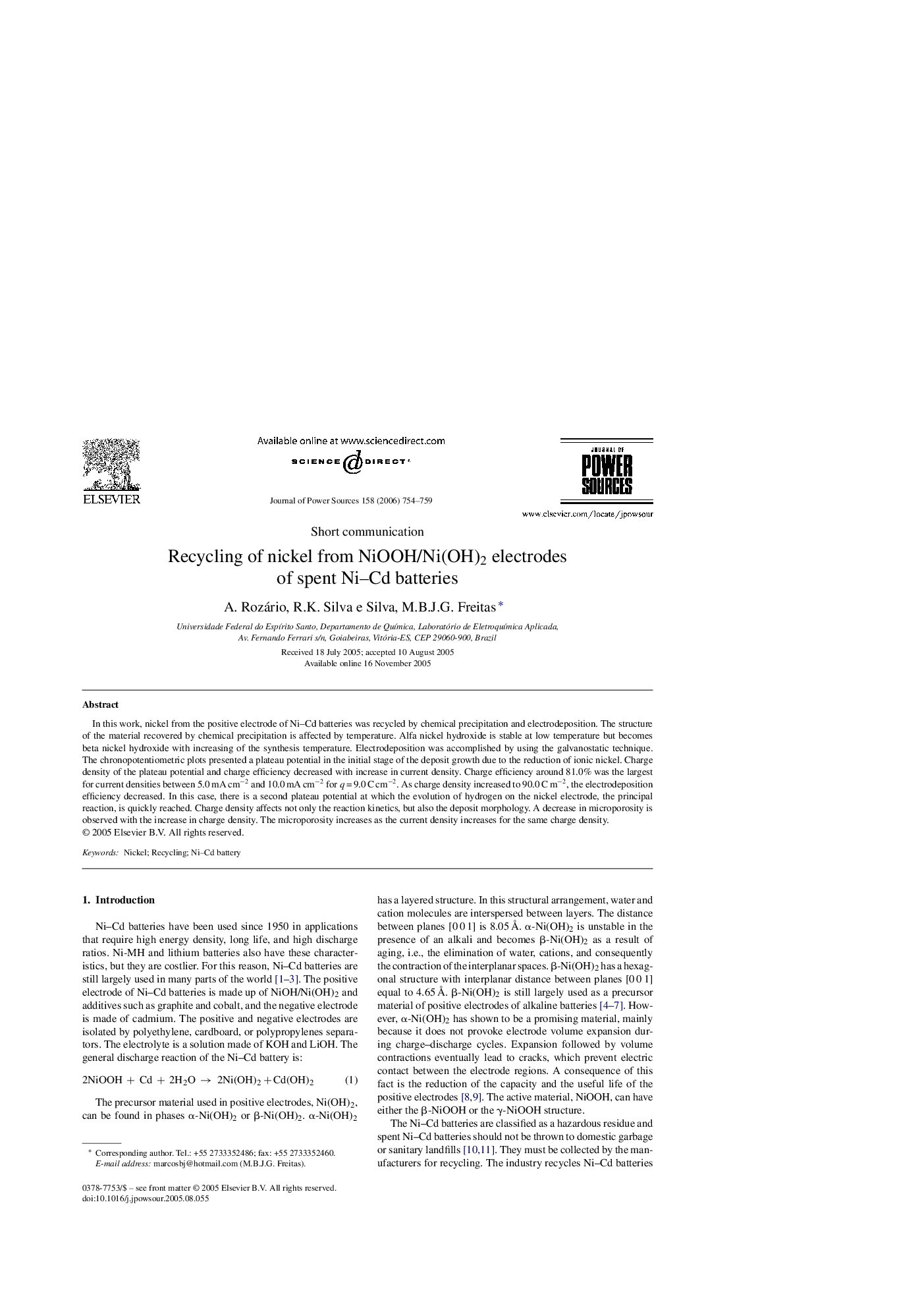| Article ID | Journal | Published Year | Pages | File Type |
|---|---|---|---|---|
| 1287630 | Journal of Power Sources | 2006 | 6 Pages |
In this work, nickel from the positive electrode of Ni–Cd batteries was recycled by chemical precipitation and electrodeposition. The structure of the material recovered by chemical precipitation is affected by temperature. Alfa nickel hydroxide is stable at low temperature but becomes beta nickel hydroxide with increasing of the synthesis temperature. Electrodeposition was accomplished by using the galvanostatic technique. The chronopotentiometric plots presented a plateau potential in the initial stage of the deposit growth due to the reduction of ionic nickel. Charge density of the plateau potential and charge efficiency decreased with increase in current density. Charge efficiency around 81.0% was the largest for current densities between 5.0 mA cm−2 and 10.0 mA cm−2 for q = 9.0 C cm−2. As charge density increased to 90.0 C m−2, the electrodeposition efficiency decreased. In this case, there is a second plateau potential at which the evolution of hydrogen on the nickel electrode, the principal reaction, is quickly reached. Charge density affects not only the reaction kinetics, but also the deposit morphology. A decrease in microporosity is observed with the increase in charge density. The microporosity increases as the current density increases for the same charge density.
